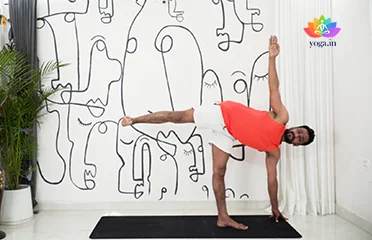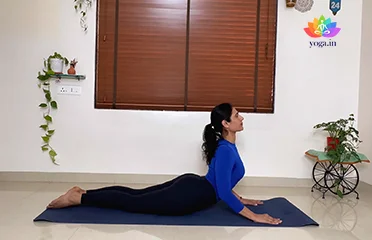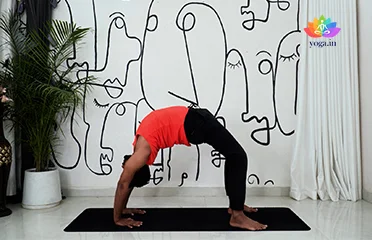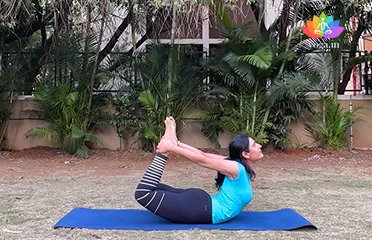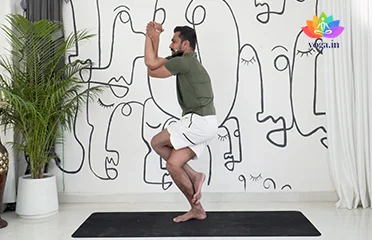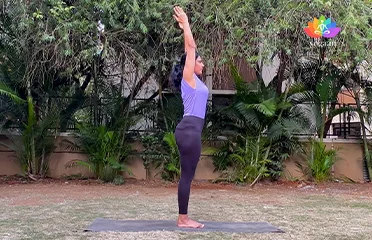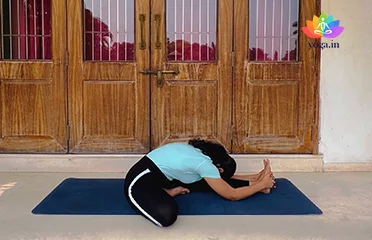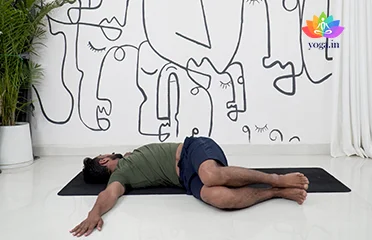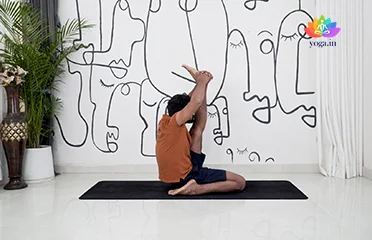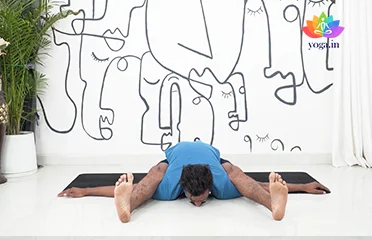Ardha Chandrasana (Half Moon Pose)
अर्धचन्द्रासना / Half Moon Pose
The Sanskrit name is derived from Ardha (अर्ध) meaning half, Chandra [�K]
Bhujangasana (Cobra Pose)
भुजंगासन / Cobra Pose
The Sanskrit name is derived from Bhujanga (भुजंगा) meaning cobra [�K]
Chakrasana (Wheel Pose)
चक्रासनI / Wheel Pose
The Sanskrit name is derived from Chakra (चक्रा) means wheel and asana [�K]
Dhanurasana (Bow Pose)
धनुरासन / Bow Pose
The Sanskrit name is derived from Dhanur (धनुर) means bow and Asana [�K]
Garudasana (Eagle Pose)
गरुडासन / Eagle Pose
The Sanskrit name is derived from Garuda (गरुडा) meaning eagle and [�K]
Hastapadasana (Hand to Foot Pose)
हस्तपदासन / Hand to Foot Pose
The sanskrit name is derived from hasta (हस्त) means hands, pada (पदा) [�K]
Janusirsasana (Head to Knee Pose)
जानुशीर्षासन / Head to Knee Pose
The Sanskrit name is derived from (जानु) Janu means knee, Sirsa (शीर्षा) [�K]
Jathara Parivartanasana (The Abdominal T
ञठर परिवर्तनासन / The Abdominal Twist
The Sanskrit name is derived from Jathara (ञठर) meaning belly or abdomen, [�K]
Kraunchasana (Heron Pose)
क्रौञ्चासन / Heron Pose
The Sanskrit name is derived from Kraunch (क्रौञ्च) meaning heron [�K]
Kurmasana (Tortoise Pose)
कूर्मासन / Tortoise Pose
The Sanskrit name is derived from Kurma (कूर्मा) meaning tortoise [�K]
- 1
- 2
- 3
Yoga for Gallbladder and Liver Health
The gallbladder and liver are vital organs responsible for digestion and detoxification. When these organs malfunction, it can lead to various health issues, including gallstones, liver inflammation, and digestive problems. Yoga offers a holistic approach to supporting gallbladder and liver health by improving digestion, reducing stress, and promoting overall well-being.
Benefits of Yoga for Gallbladder and Liver
Regular yoga practice can offer numerous benefits for gallbladder and liver health:
- Improved digestion: Gentle yoga poses stimulate the digestive system, aiding in bile production and release.
- Reduced inflammation: Yoga’s stress-reducing effects can help lower inflammation in the body, beneficial for liver and gallbladder health.
- Enhanced detoxification: Certain yoga poses support the body’s natural detoxification processes.
- Stress management: Chronic stress can negatively impact liver function. Yoga’s stress-reducing qualities can help protect liver health.
List of Yoga Poses for Gallbladder and Liver Health
- Balasana (Child’s Pose): This gentle pose stretches the back, hips, and thighs, while also relaxing the mind. It can help relieve digestive discomfort.
- Supta Baddha Konasana (Reclining Bound Angle Pose): This pose gently stretches the inner thighs, groin, and lower back. It can help improve blood flow to the pelvic region and stimulate the digestive organs.
- Viparita Karani (Legs-Up-the-Wall Pose): This restorative pose helps improve circulation, reduce swelling, and calm the nervous system.
- Marjaryasana-Bitilasana (Cat-Cow Pose): This gentle spinal movement massages the abdominal organs and improves digestion.
- Paschimottanasana (Seated Forward Fold): This pose stretches the hamstrings, lower back, and abdomen, promoting relaxation and digestion.
- Twisting Poses: Twists like Bharadvajasana (Bharadvaja’s Twist) or Ardha Matsyendrasana (Half Spinal Twist) can help stimulate the digestive organs and improve liver function.
Tips for Practicing Yoga Poses for Gallbladder and Liver Health
- Start gently: Begin with basic poses and gradually increase the intensity as your body adapts.
- Listen to your body: Pay attention to your body’s signals and avoid any pose that causes discomfort.
- Practice regularly: Consistent practice yields better results. Aim for at least 20-30 minutes of yoga daily.
- Focus on breath: Deep and steady breathing enhances the benefits of yoga for digestion.
- Combine with a healthy diet: A balanced diet rich in fruits, vegetables, and whole grains supports liver and gallbladder health.
Common Challenges and How to Overcome Them
- Lack of flexibility: Begin with gentle poses and gradually increase your flexibility. Use props like blankets or blocks for support.
- Time constraints: Even short yoga sessions can be beneficial. Find time for a quick practice throughout the day.
- Finding the right class: Look for yoga classes specifically designed for beginners or those with digestive issues.


